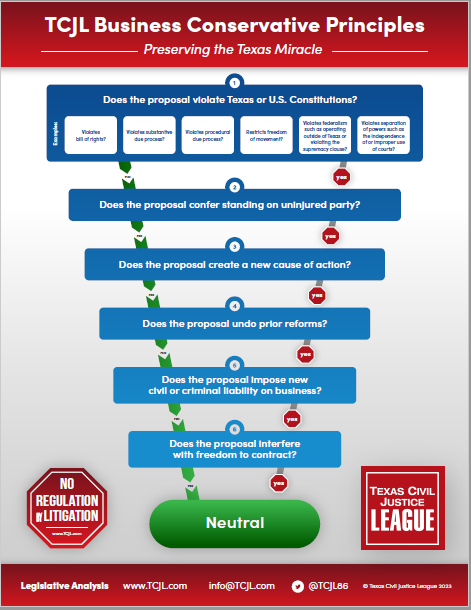 In a somewhat unusual case, the Texas Supreme Court has granted a construction contractor’s petition for review of an El Paso Court of Appeals decision reinstating the jury’s punitive damages award after confusion arose over whether the jury reached the required unanimity on the award.
In a somewhat unusual case, the Texas Supreme Court has granted a construction contractor’s petition for review of an El Paso Court of Appeals decision reinstating the jury’s punitive damages award after confusion arose over whether the jury reached the required unanimity on the award.
Oscar Renda Contracting v. Theodis and Maria Bruce, et al. (No. 22-0889, pet. granted October 20, 2023; No. 08-20-00135-CV; filed August 25, 2022) arose from a lawsuit filed by several homeowners against a contractor for alleged property damage to their homes from vibrations caused by excavation work on a storm water project for the City of El Paso. Homeowners alleged negligence, gross negligence, fraud, trespass to real property, and other theories. The jury determined that contractor’s negligence proximately caused the damages and that the contractor intentionally and negligently created a public nuisance. It found different amounts of damages for each homeowner. The punitive damages instruction conditioned the jury’s answer on a unanimous finding of negligence, as required by law, and explained that, if so, the jurors must determine by a unanimous vote whether the contractor acted with gross negligence. The jury answered yes to the gross negligence question and assessed $75,000 in punitive damages to each homeowner, for a total amount of $875,000.
This is where things got confused. The verdict certificate provided with the jury charge required at least 10 jurors to agree on every charge and that those 10 jurors sign the certificate. The jurors checked the box on the certificate indicating that 10 jurors agreed on the verdict, and the same 10 signed. The jury returned the verdict, which the trial court read and, at the homeowners’ request, polled the jury. The 10 jurors who signed answered yes on the verdict, the other two no. The court discharged the jury without objection. But when homeowners moved for entry of judgment on the verdict, the contractor objected that the judgment could not award punitive damages because the verdict was not unanimous. Homeowners countered that the because the verdict included answers on negligence, gross negligence, and punitive damages, the jury must have been unanimous on those questions. The trial court entered judgment but disregarded punitive damages. Homeowners appealed.
The court of appeals reversed. Homeowners argued that the contractor waived its objections to then jury charge because it did not object to the punitive damages questions before the charge was read to the jury. Those instructions and the charge informed the jury that it had to be unanimous that the contractor was both negligent and grossly negligent in order to proceed to the assessment of punitive damages. The contract further did not challenge the jury charge in its post-verdict response to homeowners’ motion for entry of judgment, only the unanimity issue. The court of appeals found no waiver but determined that the trial court erred when it disregarded the jury’s award of punitive damages because: (1) the contractor failed to raise the unanimity issue with the court before it discharged the jury (when it could have been corrected), and (2) even so, the contractor did not conclusively establish that the jury awarded punitive damages without unanimity.
According to the court of appeals, the proper procedure here would have been for the contractor to file a Texas Rule of Civil Procedure 301 motion, with reasonable notice, to disregard the jury finding on punitive damages. Although the contractor responded and objected to homeowners’ motion for entry of judgment, it did not file a Rule 301 written motion with notice. Without a proper notice, the court of appeals concluded, the trial court had no authority to disregard the jury’s verdict. Further, the court held that the contractor should also have filed a Rule 295 post-verdict motion requesting the trial court to in writing instruct the jury in open court about the problem with the punitive damages verdict, provide additional instructions as appropriate, and retire the jury for further deliberations. The contractor didn’t do that, either. Finally, the court of appeals ruled that since the verdict certificate neglected to give jurors the option of certifying its answers to the negligence, gross negligence and punitive damages questions as unanimous, and no Rule 295 motion was made asking the court to provide an amended verdict form, the trial court had no authority to disregard the verdict once the jury had been discharged.
Justice Alley dissented. He found fault with the jury charge itself, which did not include the proper instruction, approved by SCOTX in 2005, for the jury on how to complete the verdict form. A proper instruction would have provided a second certificate “that would have verified that the answers to the punitive damages questions were indeed decided unanimously.” Moreover, when the court polled the jury, 10 jurors affirmed their verdict for homeowners and two said no. Although neither party objected to the charge, Justice Alley argues, the majority improperly placed the burden on the defendant to “conclusively establish” that the verdict was not unanimous, rather than on the plaintiff “to obtain all the needed findings to support the [punitive damages] award,” as required by SCOTX precedent. Here, plaintiffs failed to clear up the unanimity problem, thus failing their burden. Additionally, the Rule 301 waiver issue relied on by the majority was not raised below and not briefed by the homeowners. Justice Alley, consequently, would not have considered it. But regardless of any of these issues, Justice Alley would have upheld the trial court because he found no reasonable interpretation of a 10-2 verdict that could produce a unanimous verdict on punitive damages.
SCOTX has set this case for oral argument on January 30, 2024.












